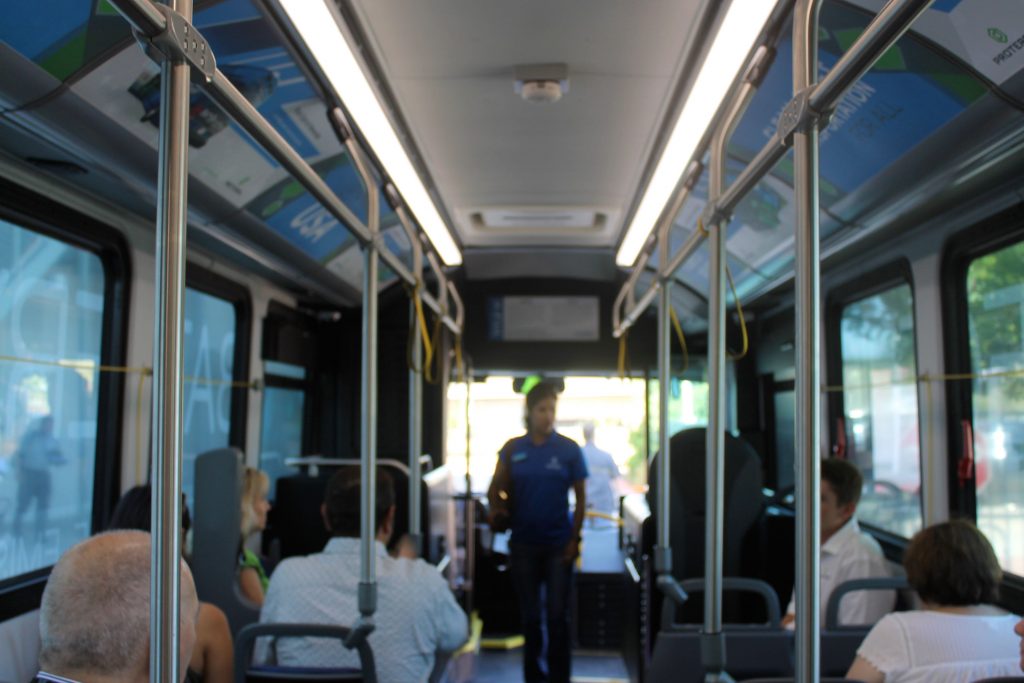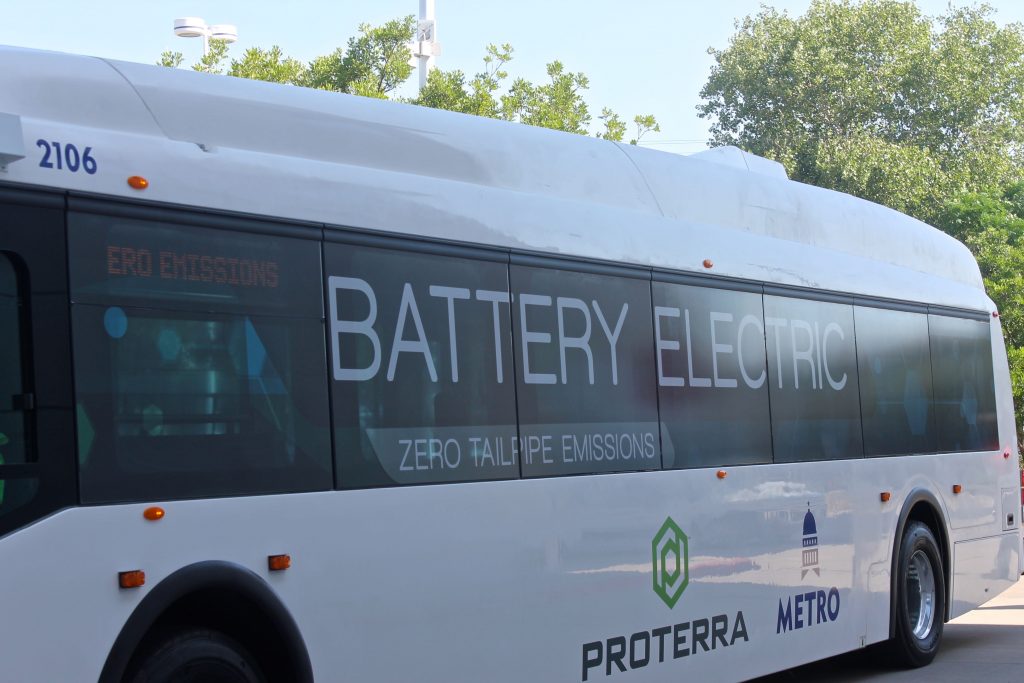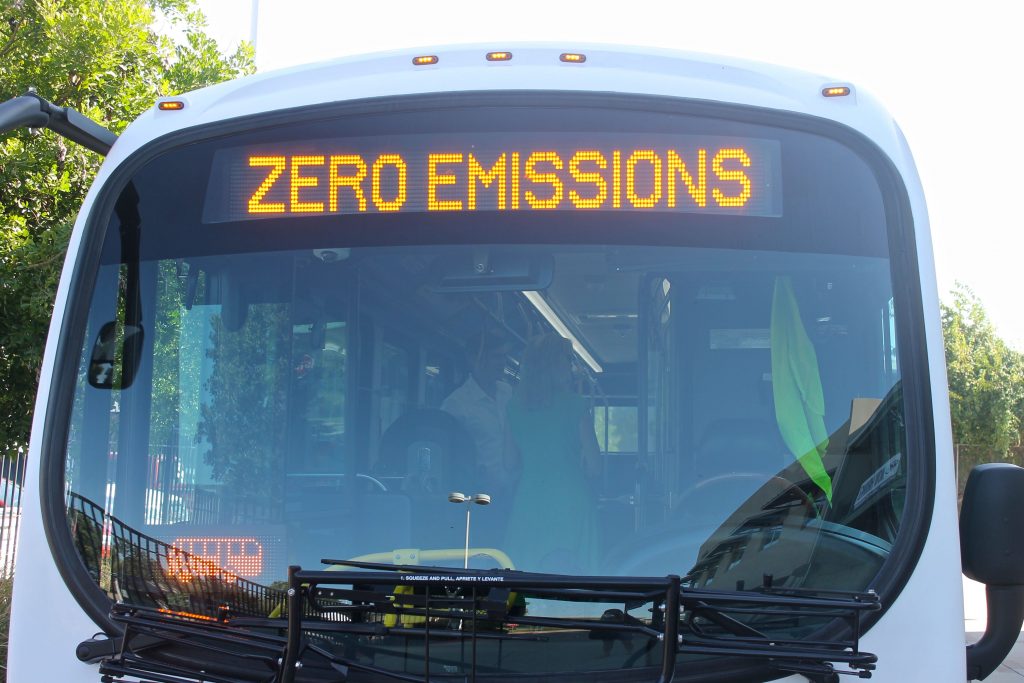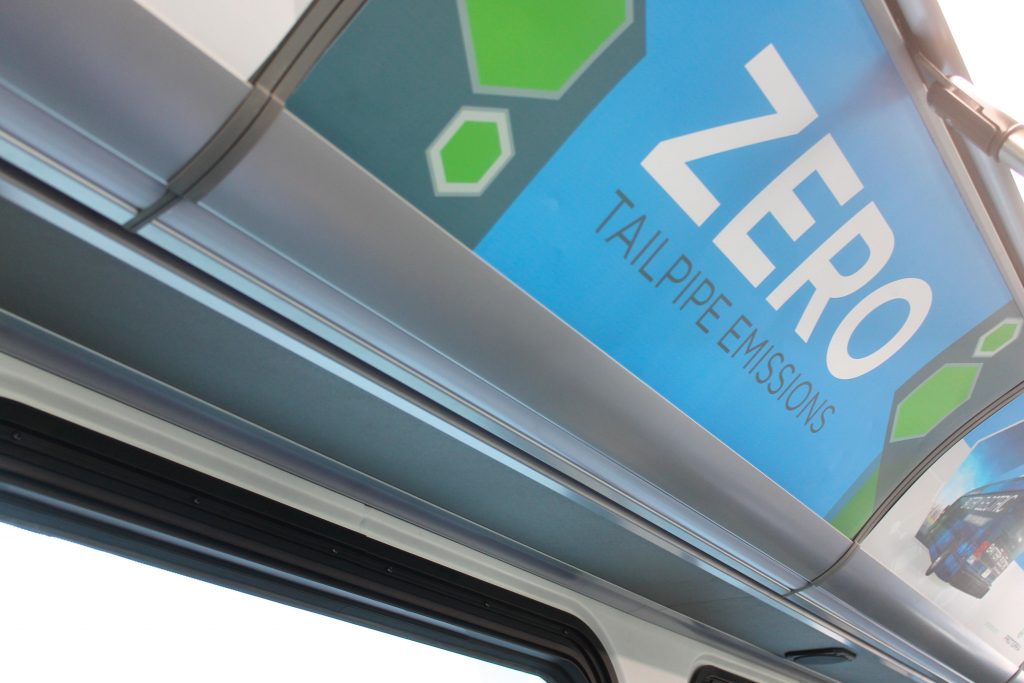The future is here. Electric buses have arrived in Austin… and more are coming.
Last week, Capital Metro (our city’s public transportation provider) began testing out an electric bus, with the hopes of adding 40 to our city’s fleet by 2024. Over the next few months, Cap Metro will continue to test electric buses from three different companies, integrating them into Cap Metro’s regular service routes. This will allow them to see how the buses perform in real conditions during the Texas summer – with the AC blasting and plenty of people on board.
So how do electric buses differ from diesel ones? We dove into the specifics last week when Cap Metro’s Dottie Watkins came into the studio as a guest on Shades of Green, our radio show partner.
Here are the highlights:
- The average electric bus Cap Metro is testing out has about a 120 mile range. Right now, about a third of Cap Metro’s buses drive 120 miles or less a day.
- The electric buses take about 6 to 8 hours to recharge. Cap Metro plans on recharging them overnight.
- A diesel bus costs about $500,000, while an electric bus costs anywhere from $800,000 to $900,000. However, lifetime fuel and maintenance costs are lower on electric buses than diesel-powered ones.
- Only a small amount of the buses on the road in North America today are electric (about 400), but that number is expected to increase dramatically over the next several years, especially since our country’s two largest transit systems (LA and New York) have made pledges to eliminate emissions from their bus fleets by 2030 and 2040 respectively. According to Dottie, this isn’t just good for the planet, but for Austin as well. “The more of them that get made, the more we know that cost differential will come down,” she said.
- Austin’s goal of 40 electric buses by 2022 accounts for about 10 percent of the city’s fleet, but Cap Metro isn’t planning on stopping there. They’re working with the Center for Transportation and the Environment to build out a larger electric bus roadmap and to determine how quickly they can convert more of their fleet.
One last thing – why does this even matter?
Climate Change – About a third of our city’s greenhouse gas emissions come from transportation. Unlike the electricity sector where our city has been able to dramatically reduce emissions, serious transportation solutions have been notably lacking.
When Cap Metro begins electrifying its bus fleet, it will be backed up by 100 percent Texas wind power, courtesy of Austin Energy.
Air Pollution – Stand at a bus stop for a few minutes or ride your bike by a bus, and it’s easy to imagine the benefits of going electric. Diesel buses produce tailpipe emissions that contribute to localized air pollution, which is a constant problem in big cities.
PS – Cap Metro wrapped up its initial electric bus test run on Thursday, but it’s getting another one in September… so stay tuned for your chance to ride!






